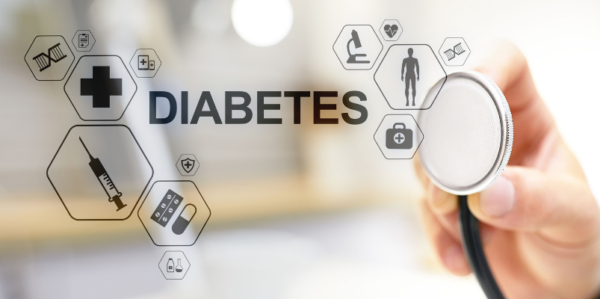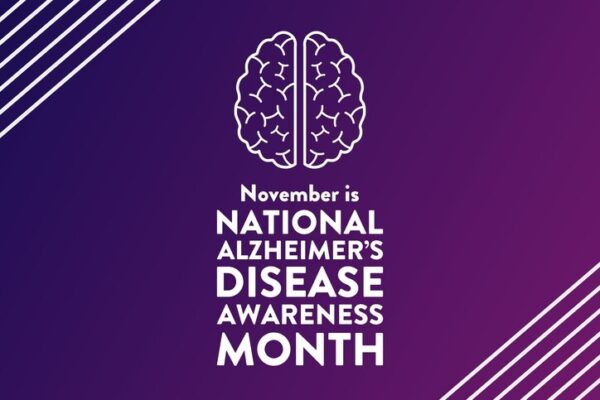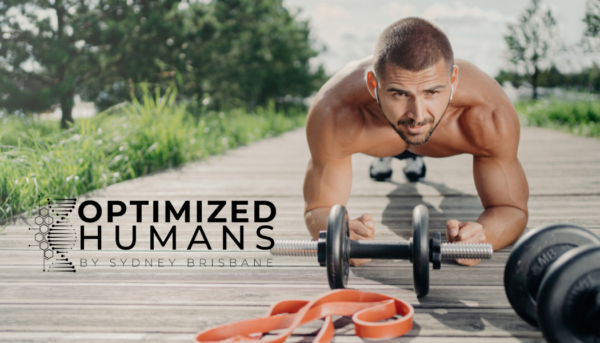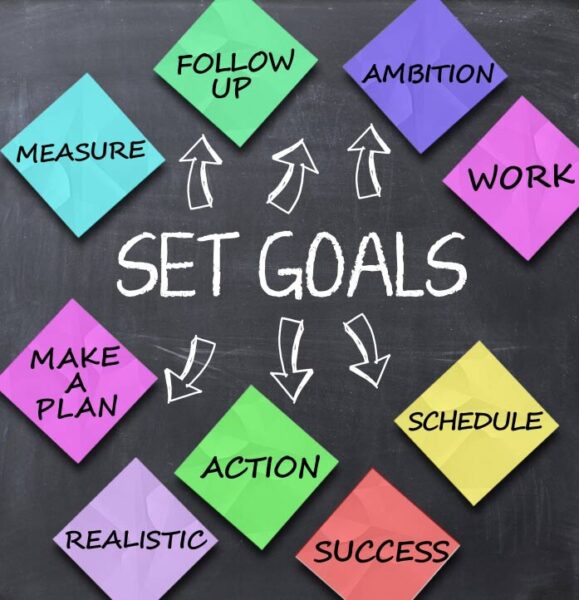
Set Goals
Introduction
As December winds down, it’s the perfect time to reflect on the past year and set goals for the year ahead. A fresh start in January begins with intentional planning in December. This blog explores how you can set achievable health goals and build a foundation for success with the Optimized Humans App.
Why Goal Setting Matters
Goals provide direction and motivation, especially during transitions. Whether your focus is weight loss, muscle gain, or improved mental well-being, starting with clear objectives ensures you stay consistent.
Steps to Set and Achieve Your Health Goals
- Reflect on 2024: Review what worked and what didn’t in your fitness and wellness journey.
- Set SMART Goals: Make your goals Specific, Measurable, Achievable, Relevant, and Time-bound.
- Create a Plan: Break down your goals into smaller, actionable steps.
- Track Progress: Use the Optimized Humans App to monitor workouts, meals, and progress.
Closing Thoughts
Your health goals are within reach when you approach them with clarity and the right tools. Let December be the springboard for an empowered and healthier 2025.
LETS GET FIT TOGETHER: Begin your journey to optimal health with Optimized Humans. Subscribe today and use code NEWYEARFIT25 for an exclusive discount!

Introduction
The holiday season is often synonymous with joy and celebration, but it can also bring stress, fatigue, and emotional strain. Whether it’s managing expectations or juggling responsibilities, staying mentally centered is crucial. This blog explores how mindfulness and simple practices can support your mental well-being during this busy season.
Why the Holidays Can Be Stressful
The holidays are full of activities, from gift shopping to family gatherings, which can be overwhelming. Financial pressures, travel plans, and high expectations can add to the stress, affecting both your mental and physical health.
Mindfulness Techniques for Holiday Stress
- Practice Gratitude: Take time each day to reflect on things you’re thankful for.
- Breathe Deeply: Engage in breathing exercises to calm your mind and reduce stress.
- Set Boundaries: Say no to activities that overextend your energy or resources.
- Stay Active: Exercise is a powerful tool for stress relief and mental clarity.
Closing Thoughts
The holidays are a time to reconnect with what truly matters. Prioritizing your mental health ensures you can fully enjoy the season and start the new year refreshed.
Call to Action: Optimize your mind and body with the Optimized Humans App. Sign up today using code NEWYEARFIT25 for exclusive holiday savings.
Introduction
For individuals managing diabetes, the holiday season can be a tricky time. With sweet treats, family feasts, and festive drinks around every corner, it’s easy to feel overwhelmed. This blog shares practical strategies to enjoy the holidays while keeping blood sugar levels in check.
The Holiday Challenge for Diabetes Management
The abundance of high-carb and high-sugar foods during the holidays can lead to blood sugar spikes, making it harder to manage diabetes. However, with a bit of planning and mindfulness, you can indulge while staying on track with your health goals.
Tips for Managing Diabetes During the Holidays
- Plan Your Meals: Stick to your meal plan as closely as possible. If you’re attending a party, have a balanced snack beforehand.
- Portion Control: Savor small portions of your favorite holiday dishes instead of overloading your plate.
- Stay Hydrated: Drinking water can help stabilize blood sugar levels and curb overeating.
- Monitor Blood Sugar: Keep track of your levels more frequently during this period to make necessary adjustments.
Closing Thoughts
The holidays should be a time of joy and connection, not stress about your health. With the right strategies, you can navigate the season confidently while keeping your diabetes well-managed.
LETS GET HEALTHY TOGETHER: Join Optimized Humans to access tailored meal plans and fitness routines that support your health goals. Use code NEWYEARS25 for a discount on your subscription.
November is National Alzheimer’s Disease Awareness Month, a time to focus on one of the most prevalent and devastating conditions affecting millions of people worldwide. Alzheimer’s disease is a progressive neurological disorder that impairs memory, thinking, and behavior. Raising awareness about this condition is crucial in helping people understand its effects, prevention strategies, and the steps we can take to support brain health throughout life.
In this post, we’ll explore what Alzheimer’s disease is, its risk factors, the importance of early detection, how lifestyle choices like exercise and nutrition can help lower the risk, and some key statistics to help raise awareness.
What is Alzheimer’s Disease?
Alzheimer’s disease is the most common form of dementia, accounting for about 60-80% of dementia cases. It’s a degenerative condition that primarily affects memory, thinking skills, and behavior. As the disease progresses, it interferes with a person’s ability to carry out even the simplest tasks, eventually leading to complete dependency on others for care. Alzheimer’s is a fatal condition with no cure, but early detection and proper care can slow its progression and improve quality of life.
The disease typically affects people over the age of 65, although early-onset Alzheimer’s can appear in people as young as 40 or 50. It’s characterized by the buildup of amyloid plaques and tau tangles in the brain, leading to the loss of connections between neurons, the brain’s cells. Over time, this damage results in cognitive decline and the shrinking of brain tissue.
Risk Factors and Early Signs
Alzheimer’s disease develops due to a combination of genetic, environmental, and lifestyle factors. Here are some key risk factors:
- Age: The greatest known risk factor for Alzheimer’s is age, with the majority of cases occurring in individuals over 65.
- Family History: Those with a parent, sibling, or child with Alzheimer’s are more likely to develop the disease.
- Genetics: Certain genes, such as the APOE-e4 gene, are associated with a higher risk of developing Alzheimer’s.
- Chronic Conditions: Conditions like heart disease, diabetes, and high blood pressure can increase the risk of Alzheimer’s by affecting the health of blood vessels that nourish the brain.
- Lifestyle Factors: Lack of physical activity, poor diet, and chronic stress have all been linked to an increased risk of cognitive decline and Alzheimer’s.
Early signs of Alzheimer’s often include memory loss, difficulty completing familiar tasks, trouble with language, and confusion about time or place. It’s important to recognize these signs early and seek medical evaluation, as early intervention can make a significant difference in managing the condition.
How a Healthy Lifestyle Can Help Lower the Risk
While there is no definitive way to prevent Alzheimer’s, research suggests that certain lifestyle factors may reduce the risk or delay the onset of the disease. Maintaining a healthy brain is closely tied to keeping the heart, body, and mind in good shape. Here are some ways to support brain health and lower your risk of Alzheimer’s:
- Regular Exercise: Physical activity increases blood flow to the brain and supports the growth of new brain cells. It also reduces the risk of chronic diseases that contribute to Alzheimer’s, such as heart disease and diabetes. Studies have shown that regular aerobic exercise, like walking, swimming, or cycling, can help improve memory and cognitive function.
- Healthy Diet: A brain-healthy diet is rich in fruits, vegetables, whole grains, and healthy fats. The Mediterranean and DASH diets are particularly beneficial, emphasizing foods like leafy greens, berries, nuts, fish, and olive oil. These diets have been shown to improve cognitive function and reduce the risk of Alzheimer’s by providing essential nutrients that protect brain cells.
- Mental Stimulation: Keeping the brain active is crucial for cognitive health. Engaging in mentally stimulating activities, such as puzzles, reading, learning new skills, or playing strategy games, can strengthen brain function and help build a cognitive reserve that may delay the onset of Alzheimer’s symptoms.
- Social Engagement: Maintaining social connections is important for brain health. Isolation and loneliness can increase the risk of cognitive decline, while staying socially active with friends, family, and community activities can improve mental and emotional well-being.
- Adequate Sleep: Poor sleep, especially chronic sleep deprivation, has been linked to an increased risk of Alzheimer’s. Sleep is essential for clearing toxins from the brain that accumulate during the day, including amyloid, a protein linked to Alzheimer’s.
- Stress Management: Chronic stress can accelerate cognitive decline. Techniques such as mindfulness, meditation, yoga, and relaxation exercises can help manage stress and promote a healthy mind.
Alzheimer’s Disease Awareness: Key Statistics
The impact of Alzheimer’s disease is widespread, affecting not only those diagnosed but also their families and caregivers. Here are some key statistics to raise awareness about Alzheimer’s:
- According to the Alzheimer’s Association, more than 6 million Americans are living with Alzheimer’s disease, and this number is expected to reach nearly 13 million by 2050.
- One in three seniors dies with Alzheimer’s or another form of dementia, making it a leading cause of death among older adults.
- Women are disproportionately affected, making up nearly two-thirds of Americans with Alzheimer’s. Women are also more likely to be caregivers for someone with the disease.
- Alzheimer’s and other dementias will cost the U.S. $355 billion in 2021, and this figure could rise to over $1.1 trillion by 2050 as the population ages.
- African Americans and Hispanics are at a higher risk of Alzheimer’s, with African Americans being twice as likely and Hispanics one and a half times as likely to develop the disease compared to non-Hispanic whites.
These statistics highlight the urgent need for increased awareness, research funding, and support for those affected by Alzheimer’s.
Final Thoughts: Raising Awareness and Taking Action
National Alzheimer’s Disease Awareness Month is an opportunity for all of us to learn more about this devastating condition, support research, and encourage healthier lifestyle choices that can lower the risk of Alzheimer’s. By staying active, eating well, and keeping your mind and heart healthy, you can reduce your risk of cognitive decline and take proactive steps toward preserving your brain health.
While there’s no cure for Alzheimer’s yet, advances in research and a greater understanding of the disease give hope for the future. As we raise awareness this month, remember that small lifestyle changes can make a big difference.
Looking for guidance on how to stay physically and mentally healthy? Join Optimized Humans today to gain access to personalized workout plans, nutrition advice, and ongoing support for your health journey. Use the code ALZHEIMERSAWARE for an exclusive discount on your subscription. Let us help you optimize your body and mind for a healthier, more vibrant life.
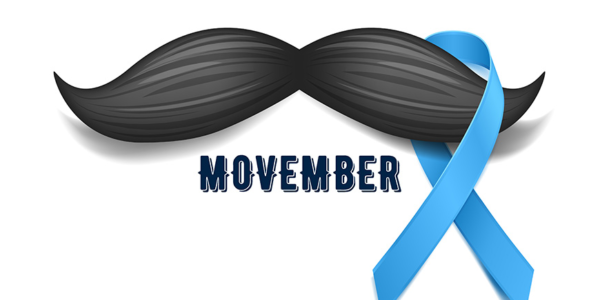
Movember: Raising Awareness for Health and the Importance of Fitness
Movember is more than just a month of growing mustaches; it’s a movement dedicated to raising awareness about men’s health, particularly in areas like prostate cancer, testicular cancer, and mental health. It’s a time when men are encouraged to take control of their health and well-being, which includes not only monitoring their physical health but also maintaining an active lifestyle. In this post, we’ll dive into the origins of Movember, why exercise is vital to your health, some compelling statistics on fitness and movement, and a 3-day workout plan to get you moving.
The Origins of Movember
Movember started in 2003 when two friends in Melbourne, Australia, joked about bringing the mustache back into style. What began as a light-hearted challenge quickly turned into a serious cause. Inspired by a friend’s mother who was fundraising for breast cancer, they decided to give the mustache growing challenge a purpose: raising awareness for men’s health, particularly prostate cancer.
Today, Movember has grown into a global movement with millions of participants from around the world. By growing mustaches and participating in fundraising activities, men (and women) help bring attention to critical health issues that men face, such as testicular cancer, mental health struggles, and physical inactivity. It’s a chance for men to start conversations about health, undergo checkups, and encourage each other to lead healthier lives.
Why Exercise is Vital to Your Health
Exercise is a key factor in preventing many of the health issues that Movember aims to raise awareness about. Regular physical activity helps maintain a healthy weight, improve cardiovascular health, reduce the risk of chronic diseases, and improve mental health.
Here are some specific ways exercise positively impacts men’s health:
- Reduces the Risk of Prostate and Testicular Cancer: Studies have shown that regular exercise can help lower the risk of prostate cancer and improve outcomes for those diagnosed. Exercise also improves testicular health by promoting blood flow and reducing stress levels.
- Boosts Mental Health: Physical activity is a natural antidepressant. Exercise releases endorphins that improve mood, reduce anxiety, and help manage stress.
- Improves Cardiovascular Health: Cardiovascular diseases are among the leading causes of death for men. Exercise strengthens the heart, improves blood circulation, and lowers the risk of heart disease.
Statistics on Fitness and Movement
The modern lifestyle often leads to a sedentary way of living, which has contributed to rising rates of chronic diseases. Here are some important statistics to highlight the importance of staying active:
- According to the World Health Organization (WHO), more than 23% of adults are not active enough. This sedentary behavior increases the risk of heart disease, obesity, diabetes, and certain cancers.
- Physical inactivity is the fourth leading risk factor for global mortality, responsible for about 3.2 million deaths annually, according to WHO.
- The American Heart Association (AHA) recommends that adults engage in at least 150 minutes of moderate-intensity aerobic exercise, or 75 minutes of vigorous exercise, per week to maintain good health.
- Men who are physically active are up to 50% less likely to develop serious chronic conditions, such as heart disease, compared to inactive men.
By incorporating regular physical activity into your routine, you can drastically improve your health, reduce your risk of chronic illness, and improve mental well-being.
3-Day Workout Program to Get You Moving
Here’s a simple but effective 3-day workout program designed to get you moving, boost your strength, and improve your cardiovascular health. This program requires minimal equipment and can be done at home or in the gym. Remember to warm up before each session and cool down afterward with some light stretching.
| Day | Exercise | Sets | Reps | Rest |
|---|---|---|---|---|
| Day 1: Full-Body Strength | ||||
| Squats | 3 | 12 | 60 sec | 45 sec |
| Push-ups | 3 | 10 | 60 sec | 30 sec |
| Dumbbell Rows (or Resistance Band Rows) | 3 | 12 | 60 sec | 30 sec |
| Plank | 3 | 30 sec | 60 sec | 15 sec |
| Lunges | 3 | 12 per leg | 60 sec | 30 sec |
| Day 2: Cardio & Core | ||||
| Jumping Jacks | 3 | 1 min | 30 sec | 20 sec |
| Mountain Climbers | 3 | 30 sec | 30 sec | 20 sec |
| Bicycle Crunches | 3 | 15 per side | 30 sec | 20 sec |
| Burpees | 3 | 10 | 60 sec | 20 sec |
| Russian Twists | 3 | 20 | 30 sec | 20 sec |
| Day 3: Lower Body & Stretching | ||||
| Glute Bridges | 3 | 15 | 60 sec | 30 sec |
| Wall Sit | 3 | 45 sec | 60 sec | 30 sec |
| Calf Raises | 3 | 15 | 60 sec | 30 sec |
| Forward Fold Stretch | 3 | 30 sec | – | 15 sec |
| Hip Flexor Stretch | 3 | 30 sec per side | – | 15 sec |
This simple program is designed to give you a mix of strength, cardiovascular, and flexibility training. The combination of exercises targets all major muscle groups and keeps your body moving, whether you’re just getting started or looking to maintain a fitness routine during Movember.
Final Thoughts: Get Active This Movember
Movember is a reminder that men’s health matters. While growing a mustache is a fun way to raise awareness, taking steps to improve your health is equally important. Incorporating exercise into your routine can help you lower your risk for serious health conditions, improve your mental well-being, and set you up for a healthier life.
So, why not use Movember as a time to not only raise awareness but also take charge of your own health? Whether you’re committing to regular workouts, going for daily walks, or making other healthy lifestyle changes, every step counts.
Ready to optimize your health even further? Sign up for Optimized Humans and gain access to personalized workout plans, meal recommendations, and a supportive fitness community. Use the code MOVEMBERFIT for a special discount when you subscribe! Join us this Movember and take the first step towards a healthier, more active you. https://www.trainerize.me/profile/siiib/Optimized.Humans/
Hello Optimized Humans! My name is Sydney Brisbane your Optimal Wellness Specialist and I have dedicated most of my life to helping people like you maximize their human potential through personalised workouts, meal plans, and curated schedules to hit their lifestyle goals. I do this via my app, it offers a comprehensive range of features to help you achieve your wellness goals. Whether you’re looking to improve your fitness, nutrition, or overall well-being, this user’s guide will provide you with a detailed walkthrough on how to maximize the value of your Optimized Humans subscription.
Getting Started
- Contact Me
-
- Send me an email sydney@optimizedhumans.life requesting a discovery call.
- Message me on any social media platform with your name, phone number, or email address.
- I will send you a unique link dedicated to your profile
- Last you can download the app on either store IOS or Android. Then send me a email or direct message, so I can build and link your profile.
- Download and Install the App:
- Available on both iOS and Android platforms, download the Optimized Humans app from the App Store or Google Play.
- Open the app and sign up using your email address or social media account.
- Profile Setup:
- Complete your profile by entering your personal information, fitness goals, and current fitness level. This will help the app tailor its recommendations to your specific needs.
- Complete your waivers and questionnaire so that I can create the best workout for you experience level and needs.
- Set your preferences for workout types, dietary restrictions, and any other relevant details.
Navigating the Dashboard
The dashboard is your home screen, providing a quick overview of your daily activities, progress, and personalized recommendations.
- Daily Summary:
- View a snapshot of your daily stats, including steps taken, calories burned, and active minutes.
- Access your workout schedule and meal plan for the day.
- Progress Tracking:
- Track your fitness progress over time with charts and graphs. Monitor your weight, body measurements, hear rate, calorie intake, calorie expenditure, and performance improvements.
Personalized Workout Plans
One of the standout features of the Optimized Humans app is its ability to create personalized workout plans tailored to your goals and fitness level.
- Setting Up Your Workout Plan:
- Depending on which program you to choose to be a part of, I will either create a personalised program for you, or you can create your own in our On-Demand Library.
- If you choose to create your own, follow the next steps below:
- Go to the “Workouts” section and select “Create a New Plan.”
- Choose your fitness goal (e.g., weight loss, muscle gain, endurance) and specify your preferred workout types (e.g., cardio, strength training, yoga).
- Set your workout frequency and duration.
- Accessing Your Workouts:
- Your personalized workout plan will be displayed in the “Workouts” section.
- Follow along with detailed video tutorials and step-by-step instructions for each exercise.
- Log your workouts to track your progress and receive feedback.
- Outdoor and Home Workouts:
- Explore a variety of workouts that can be performed outdoors or at home with minimal equipment.
- Use the GPS tracking feature for outdoor runs, walks, and cycling routes.
Nutrition and Meal Planning
Optimize your diet with personalized meal plans and nutrition tracking.
- Setting Up Your Meal Plan:
- Option 1: Just as the same as your workout plan, we will create you a “Smart Meal Plan” with our food library.
- You will give us all the nutritional information that you are interested in or any allergies you may have and we will create a “Smart Meal Plan” dedicated to fit your needs.
- You will receive a customized meal plan with breakfast, lunch, dinner, and snack options.
- If you do not like a meal you can swap it out for another meal at anytime.
- Option 2: In the “Nutrition” section, select “Create a Meal Plan.”
- Enter your dietary preferences, restrictions, and goals (e.g., calorie intake, macronutrient distribution).
- Receive a customized meal plan with breakfast, lunch, dinner, and snack options.
- Option 1: Just as the same as your workout plan, we will create you a “Smart Meal Plan” with our food library.
- Accessing Recipes:
- Browse a vast library of healthy recipes tailored to your dietary needs.
- Save your favorite recipes and add ingredients to your shopping list.
- Tracking Your Nutrition:
- Log your meals and snacks to monitor your calorie and nutrient intake.
- Use the barcode scanner to quickly add packaged foods to your diary.
- We advise that you use myfitnesspal to track your calories.
Recovery and Wellness
Recovery is a crucial part of any fitness journey. The app offers features to help you rest, recover, and maintain overall wellness.
- Guided Stretching and Yoga:
- Access guided stretching routines and yoga sessions designed to improve flexibility and promote relaxation.
- Follow along with video instructions to ensure proper form and technique.
- Sleep Tracking:
- Track your sleep patterns to ensure you’re getting adequate rest.
- Set sleep goals and receive tips for improving sleep quality.
- Be sure to link your tracking device to the app.
- Mindfulness and Meditation:
- Explore guided meditation sessions to reduce stress and improve mental clarity.
- Practice mindfulness exercises to enhance your overall well-being.
Community and Challenges
Stay motivated by connecting with other users and participating in challenges.
- Joining the Community:
- Access the “Community” section to connect with other Optimized Humans users.
- Share your progress, post updates, and find workout buddies.
- Participating in Challenges:
- Join community challenges to stay motivated and compete with other users.
- Track your performance in real-time and earn badges and rewards.
Support and Resources
If you need assistance or want to learn more, the app provides comprehensive support and resources.
- Help Center:
- Please feel free to reach out to me or your coach with any questions first.
- Access the Help Center for FAQs, tutorials, and troubleshooting guides.
- Contact customer support for personalized assistance.
- Educational Resources:
- Browse articles, videos, and expert tips on fitness, nutrition, and wellness.
- Stay informed with the latest health trends and research.
Conclusion
The Optimized Humans app is a powerful tool designed to support your health and fitness journey. By leveraging its personalized workout plans, nutrition tracking, recovery features, and community support, you can achieve your wellness goals more effectively. Follow this guide to get the most out of your subscription and embrace a healthier, more optimized lifestyle. Download the Optimized Humans app today and start your journey towards a better you!
Exclusive OFFER! FREE 14 DAY TRIAL!
CLICK LINK BELOW
https://www.trainerize.me/profile/siiib/?planGUID=28a1d9e4193241a59dd3afaa62b54837

Let’s face it embarking on a “diet” (a word I hate using because of the stigma, I prefer clean or healthy meal plan/planning) journey often means paying close attention to macronutrients—proteins, fats, and carbohydrates—that fuel our bodies. Even seasoned dieters can make common mistakes when it comes to balancing these essential nutrients. Let’s dive into spoon and fork into the most frequent macro mistakes and how to avoid them.
1. Overemphasizing Protein Intake
The Mistake: While protein is crucial for muscle repair and growth, overemphasis on it can lead to neglecting other essential nutrients. Many experienced dieters fall into the trap of consuming too much protein compared to a healthy balance, believing it will lead to greater muscle gain or fat loss.
The Fix: According to the Dietary Guidelines for Americans, the recommended dietary allowance (RDA) for protein is 46 grams per day for women and 56 grams per day for men. Instead of focusing solely on protein, ensure you’re getting a balanced intake of all macronutrients. A good rule of thumb is to distribute your daily calorie intake to about 10-35% protein, 45-65% carbohydrates, and 20-35% fats.
***Personal Tip (1 gram per pound of total bodyweight, or 1 gram per pound of goal bodyweight)
2. Neglecting Carbohydrates
The Mistake: Carbohydrates often get a bad rap in diet culture. Many dieters, even experienced ones, may cut carbs drastically, thinking it will speed up weight loss. However, this can lead to energy slumps and nutrient deficiencies.
The Fix: Carbohydrates are the body’s primary energy source. The Institute of Medicine recommends that 45-65% of your daily calories come from carbohydrates. Focus on consuming complex carbohydrates such as whole grains, vegetables, and fruits, which provide sustained energy and essential nutrients.
3. Ignoring the Importance of Fats
The Mistake: In an effort to reduce calorie intake, some dieters cut out fats almost entirely. This can be detrimental, as fats are essential for hormone production, brain health, and the absorption of fat-soluble vitamins (A, D, E, and K).
The Fix: Healthy fats should comprise 20-35% of your daily calorie intake. Prioritize sources of unsaturated fats such as avocados, nuts, seeds, and olive oil. These not only provide energy but also support overall health and well-being.
4. Misjudging Portion Sizes
The Mistake: Even when focusing on macros, portion control can be a stumbling block. Overestimating portion sizes can lead to consuming more calories than intended, while underestimating can result in nutrient deficiencies.
The Fix: Use measuring tools like cups, spoons, and food scales to accurately gauge portion sizes. Familiarize yourself with visual cues for portion sizes, such as understanding that a serving of protein is roughly the size of a deck of cards.
5. Inadequate Fiber Intake
The Mistake: Fiber often gets overlooked in the quest to balance macros. However, a diet lacking in fiber can lead to digestive issues and suboptimal blood sugar control.
The Fix: The Academy of Nutrition and Dietetics recommends 25 grams of fiber per day for women and 38 grams for men. Incorporate a variety of fiber-rich foods into your diet, such as vegetables, fruits, whole grains, and legumes, to support digestive health and satiety.
6. Failing to Adjust Macros for Activity Levels
The Mistake: Experienced dieters may stick to a fixed macro ratio without considering their activity levels. This can result in inadequate energy intake on active days or excessive intake on rest days.
The Fix: Adjust your macronutrient intake based on your activity level. On more active days, increase your carbohydrate intake to fuel your workouts and aid recovery. Conversely, on rest days, consider slightly reducing your carbohydrate intake while maintaining adequate protein and fat levels.
Conclusion
Even experienced dieters can fall into common macro pitfalls. By ensuring a balanced intake of protein, carbohydrates, and fats, paying attention to portion sizes, and adjusting for activity levels, you can optimize your diet for better health and performance. Remember, a well-rounded diet is key to long-term success and overall well-being.
We Want To Hear From You!
At Optimized Humans, we are committed to providing you with the personalized support and guidance you need to succeed. As your dedicated partner, I will work with you one on one through our innovative app, leveraging cutting-edge technology and my +15 years of expertise as a certified health coach. I am genuinely passionate about helping individuals like yourself unlock their full potential and live their best lives. If you’re ready to take the next step towards a healthier, happier, and more fulfilled you, I would be honored to embark on this journey with you.
Click the link below for our special offer! https://www.trainerize.me/profile/siiib/?planGUID=28a1d9e4193241a59dd3afaa62b54837&mode=checkout
As summer sets in, taking your workouts outdoors can be an invigorating way to enjoy the season while staying fit. Whether you’re running through the park, cycling along scenic routes, or practicing yoga on the beach, outdoor exercises offer a refreshing change from the gym. The Optimized Humans program is designed to help you make the most of your outdoor workouts, providing personalized guidance, tracking progress, and offering tips for various environments. Here’s how you can optimize your training with our program.
Benefits of Outdoor Workouts
Outdoor workouts come with numerous benefits that can enhance both your physical and mental well-being:
- Fresh Air and Sunshine: Exercising outdoors exposes you to fresh air and natural light, boosting your mood and providing essential vitamin D.
- Varied Terrain: Running or cycling on varied terrain can challenge your muscles differently, improving strength and endurance.
- Mental Health Boost: Nature has a calming effect, reducing stress and anxiety, and improving overall mental health.
- Engagement and Fun: Outdoor workouts can be more engaging and fun, keeping you motivated and helping you stick to your fitness routine.
Tips for Outdoor Exercises
To get the most out of your outdoor workouts, consider these tips:
- Plan Your Route: Choose safe and scenic routes for running, cycling, or walking. Familiarize yourself with the area and ensure it’s suitable for your fitness level.
- Dress Appropriately: Wear moisture-wicking clothing to keep cool and comfortable. Don’t forget a hat and sunglasses to protect yourself from the sun.
- Stay Hydrated: Bring water with you and take regular breaks to stay hydrated, especially during intense activities.
- Warm Up and Cool Down: Begin with a dynamic warm-up to prepare your muscles and end with a cool-down to prevent stiffness and soreness.
- Be Weather Aware: Check the weather forecast and plan your workouts accordingly. Avoid extreme heat and be prepared for sudden weather changes.
Optimized Humans: Your Outdoor Workout Companion
The Optimized Humans app is your ultimate companion for outdoor workouts, offering features that guide and track your progress in various environments:
- Personalized Workout Plans: The app creates customized workout plans based on your fitness goals, whether you’re focusing on cardio, strength, flexibility, or a combination of all three.
- GPS Tracking: Track your runs, walks, and cycling routes with GPS. The app logs distance, speed, and elevation, giving you detailed insights into your performance.
- Voice Coaching: Receive real-time coaching cues to keep you motivated and ensure you’re maintaining proper form. Voice coaching can also remind you to hydrate and take breaks.
- Progress Monitoring: Monitor your progress with detailed statistics and performance summaries. The app tracks your improvements and adjusts your workout plans accordingly.
- Community Challenges: Join community challenges and compete with other users. This adds a fun, social element to your workouts, keeping you motivated and accountable.
Outdoor Workout Ideas
Here are some outdoor workout ideas to try with the guidance of the Optimized Humans app:
- Running and Jogging: Use the app’s GPS tracking and voice coaching features to improve your running technique and endurance. Set goals for distance, time, or pace and track your progress.
- Cycling: Plan scenic cycling routes and monitor your speed, distance, and elevation. The app provides personalized cycling workouts to help you build strength and stamina.
- Bodyweight Exercises: Perform bodyweight exercises like push-ups, squats, lunges, and planks in your backyard or a local park. The app offers guided routines and ensures you’re performing each move correctly.
- HIIT Workouts: High-Intensity Interval Training (HIIT) can be done anywhere. Follow the app’s HIIT workouts that combine short bursts of intense exercise with periods of rest or low-intensity activity.
- Yoga and Stretching: Practice yoga and stretching routines on the beach, in a park, or in your backyard. The app provides guided sessions to improve flexibility and relaxation.
Conclusion
Optimizing your outdoor workouts with the Optimized Humans app ensures you stay fit, motivated, and engaged all summer long. By following personalized workout plans, tracking your progress, and utilizing the app’s features, you can enjoy the benefits of outdoor exercises while achieving your fitness goals. Embrace the great outdoors, breathe in the fresh air, and let the Optimized Humans program guide you to a healthier, happier you. Download the app today and take your workouts to the next level, wherever your adventures take you.
Exclusive OFFER For YOU!
Unlock your potential with a complimentary 14-day trial of our #OptimizedHumans program! 🚀 Dive into customized workouts, expert guidance, and transformative resources designed to enhance your physical and mental well-being. 💪 Join hands with Sydney and our dedicated team to embark on a personalized fitness journey tailored just for you. Together, we’ll optimize your health and set you on the path to success. Plus, discover how we collaborate with companies to boost employee efficiency through tailored workout and nutrition plans. Don’t wait any longer—start your journey to optimal living today at optimizedhumans.life!

As the summer sun blazes, your workouts might feel more intense, and your body will undoubtedly work harder. Proper post-workout recovery becomes even more crucial during hot weather to ensure your body recovers efficiently and remains injury-free. The Optimized Humans program offers expert advice and resources to help you optimize your recovery. Here are the best practices for post-workout recovery in hot weather, including stretching routines and nutrition tips available in our program.
Hydration is Key
One of the most important aspects of recovery, especially in hot weather, is staying hydrated. Your body loses more fluids through sweat, so replenishing these is essential.
1. Rehydrate Immediately: Drink plenty of water immediately after your workout. Aim for at least 16-24 ounces of water within the first 30 minutes post-exercise.
2. Electrolyte Balance: Consuming drinks with electrolytes can help replenish lost salts and minerals. Consider coconut water or specially formulated electrolyte drinks.
3. Monitor Your Hydration: Check the color of your urine; a pale yellow indicates proper hydration, while darker urine suggests you need to drink more fluids.
Effective Cooling Down
Cooling down helps bring your heart rate back to normal and prevents muscle stiffness. The Optimized Humans program offers guided cool-down routines to ensure you recover properly.
1. Gradual Cool-Down: Spend at least 5-10 minutes walking or performing low-intensity movements to gradually reduce your heart rate.
2. Static Stretching: Incorporate static stretches targeting the major muscle groups you worked during your exercise. Hold each stretch for 20-30 seconds to improve flexibility and reduce muscle tension.
3. Deep Breathing: Practice deep breathing exercises to promote relaxation and aid in the recovery process. This helps lower your heart rate and can reduce post-workout stress.
Stretching Routines for Optimal Recovery
Stretching is a crucial part of the recovery process, especially after intense workouts in hot weather. The Optimized Humans app includes comprehensive stretching routines designed to enhance recovery.
1. Full-Body Stretch Routine: Focus on a full-body stretching routine that targets all major muscle groups. This can help improve flexibility, reduce muscle soreness, and prevent injuries.
2. Yoga and Mobility Work: Incorporate yoga and mobility exercises to enhance your recovery. These practices help improve joint mobility, reduce muscle stiffness, and promote relaxation.
3. Foam Rolling: Use a foam roller to release muscle tension and improve blood flow to your muscles. The app provides guided foam rolling exercises for different muscle groups.
Nutrition for Recovery
What you eat after your workout plays a significant role in your recovery. The Optimized Humans program offers personalized nutrition plans to help you refuel and repair your body.
1. Protein Intake: Consume a protein-rich snack or meal within 30-60 minutes post-workout to support muscle repair and growth. Options include protein shakes, Greek yogurt, or a turkey sandwich.
2. Carbohydrates for Energy: Pair your protein with carbohydrates to replenish glycogen stores and provide energy for recovery. Good options include fruits, whole grains, and vegetables.
3. Healthy Fats: Include healthy fats in your post-workout meal to support overall recovery and reduce inflammation. Avocados, nuts, and olive oil are excellent choices.
4. Antioxidant-Rich Foods: Consume foods rich in antioxidants to combat oxidative stress caused by intense exercise. Berries, leafy greens, and nuts are great options.
Rest and Sleep
Adequate rest and quality sleep are essential for optimal recovery. The Optimized Humans program provides tips and techniques to improve your sleep hygiene.
1. Prioritize Sleep: Aim for 7-9 hours of sleep each night to allow your body to recover fully. Sleep is when your body repairs muscles, consolidates memory, and releases growth hormones.
2. Create a Relaxing Environment: Ensure your sleep environment is cool, dark, and quiet. Consider using blackout curtains, earplugs, or a white noise machine to enhance sleep quality.
3. Consistent Sleep Schedule: Maintain a consistent sleep schedule by going to bed and waking up at the same time each day, even on weekends.
Conclusion
Recovering properly after workouts, especially in hot weather, is essential to maintain your fitness progress and overall well-being. By following these best practices for hydration, cooling down, stretching, nutrition, and rest, you can optimize your recovery and continue to perform at your best. The Optimized Humans program is here to support you with personalized recovery plans, expert advice, and comprehensive resources. Embrace these recovery techniques to stay healthy, energized, and ready for your next workout, no matter how high the temperature rises.
Exclusive Deal For You!
Unlock your potential with a complimentary 14-day trial of our #OptimizedHumans program! 🚀 Dive into customized workouts, expert guidance, and transformative resources designed to enhance your physical and mental well-being. 💪 Join hands with Sydney and our dedicated team to embark on a personalized fitness journey tailored just for you. Together, we’ll optimize your health and set you on the path to success. Plus, discover how we collaborate with companies to boost employee efficiency through tailored workout and nutrition plans. Don’t wait any longer—start your journey to optimal living today at optimizedhumans.life!

June, a month dedicated to unleashing the full potential of our brainpower and igniting awareness for Alzheimer’s disease. As we embark on this journey of enlightenment and advocacy, let’s explore how we can channel our collective energy to raise awareness, support research, and empower those affected by Alzheimer’s. Join us as we delve into actionable strategies to make a difference this Alzheimer’s Awareness Month.
Raising Awareness:
Awareness is the first step towards meaningful change. Spread the word about Alzheimer’s disease and its impact on individuals, families, and communities. Share informative resources, personal stories, and advocacy initiatives on social media platforms, in your local community, and among your networks. By raising awareness, we can shine a light on Alzheimer’s and inspire others to join the fight.
Supporting Research:
Research is the cornerstone of progress in the fight against Alzheimer’s. Get involved in fundraising events, volunteer opportunities, and advocacy campaigns to support organizations dedicated to Alzheimer’s research. Your contributions can fund groundbreaking studies, clinical trials, and innovative treatments that bring us closer to a world without Alzheimer’s.
Empowering Those Affected:
Alzheimer’s affects millions of individuals and their loved ones worldwide. Show your support by offering compassion, understanding, and practical assistance to those living with Alzheimer’s and their caregivers. Volunteer at local memory care facilities, participate in support groups, or simply lend a listening ear to someone in need. Your kindness and empathy can make a world of difference in the lives of those affected by Alzheimer’s.
Taking Action for Change:
Action speaks louder than words. Advocate for policy changes, increased funding for Alzheimer’s research, and improved access to care and support services. Write letters to lawmakers, participate in advocacy events, and engage with advocacy organizations to amplify your voice and drive meaningful change at local, national, and global levels.
As we ignite awareness for Alzheimer’s this June, let’s unleash the full power of our brainpower to make a difference. By raising awareness, supporting research, empowering those affected, and taking action for change, we can create a future where Alzheimer’s no longer robs individuals of their memories and dignity. Together, let’s stand united in the fight against Alzheimer’s and ignite a spark of hope for generations to come.
Thank you for taking this journey with us. Hopefully this has made you more aware of the necessity of good health. If you can make an impact throughout Alzheimer’s and Brain Awareness Month and Maximize Your Human Potential!

